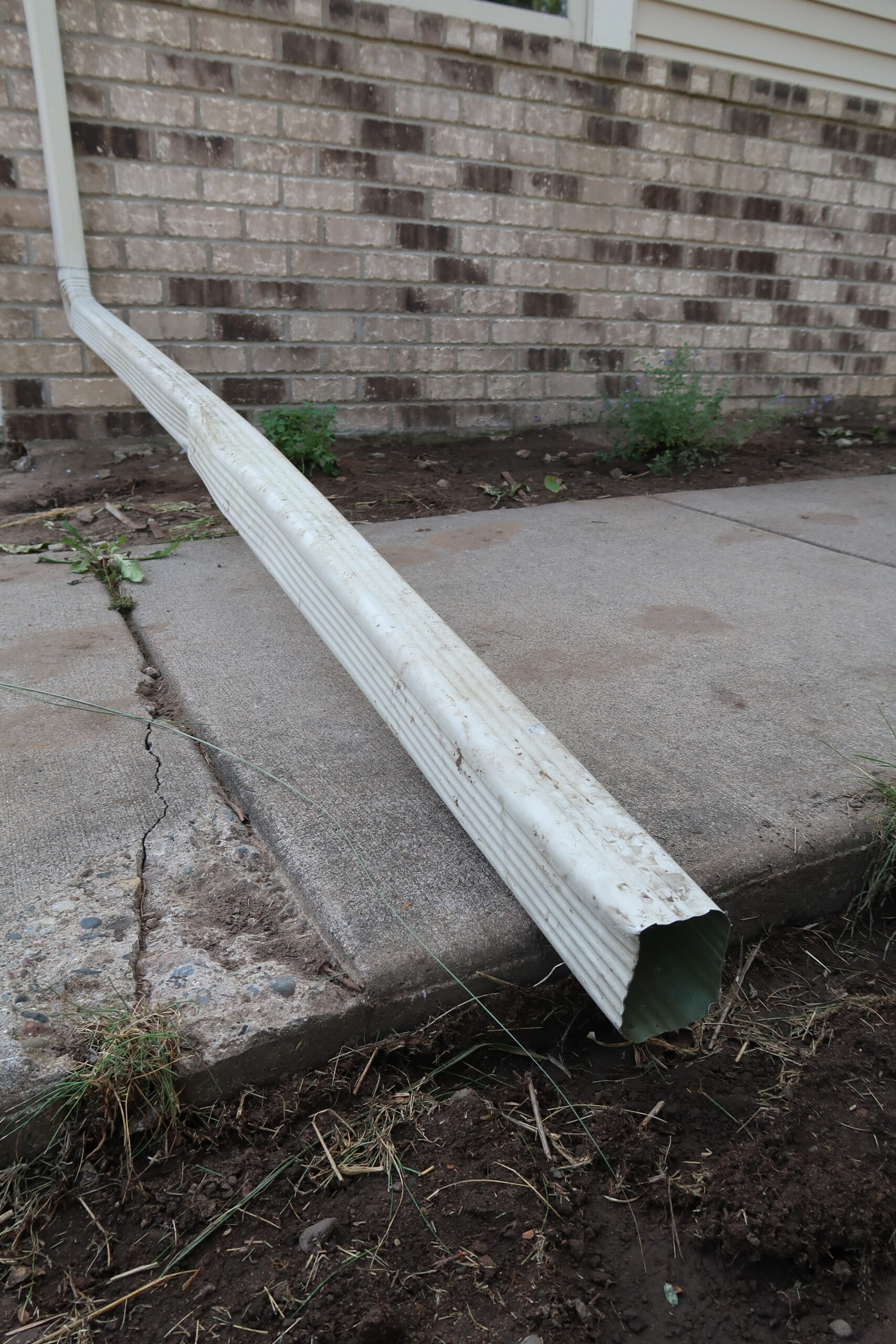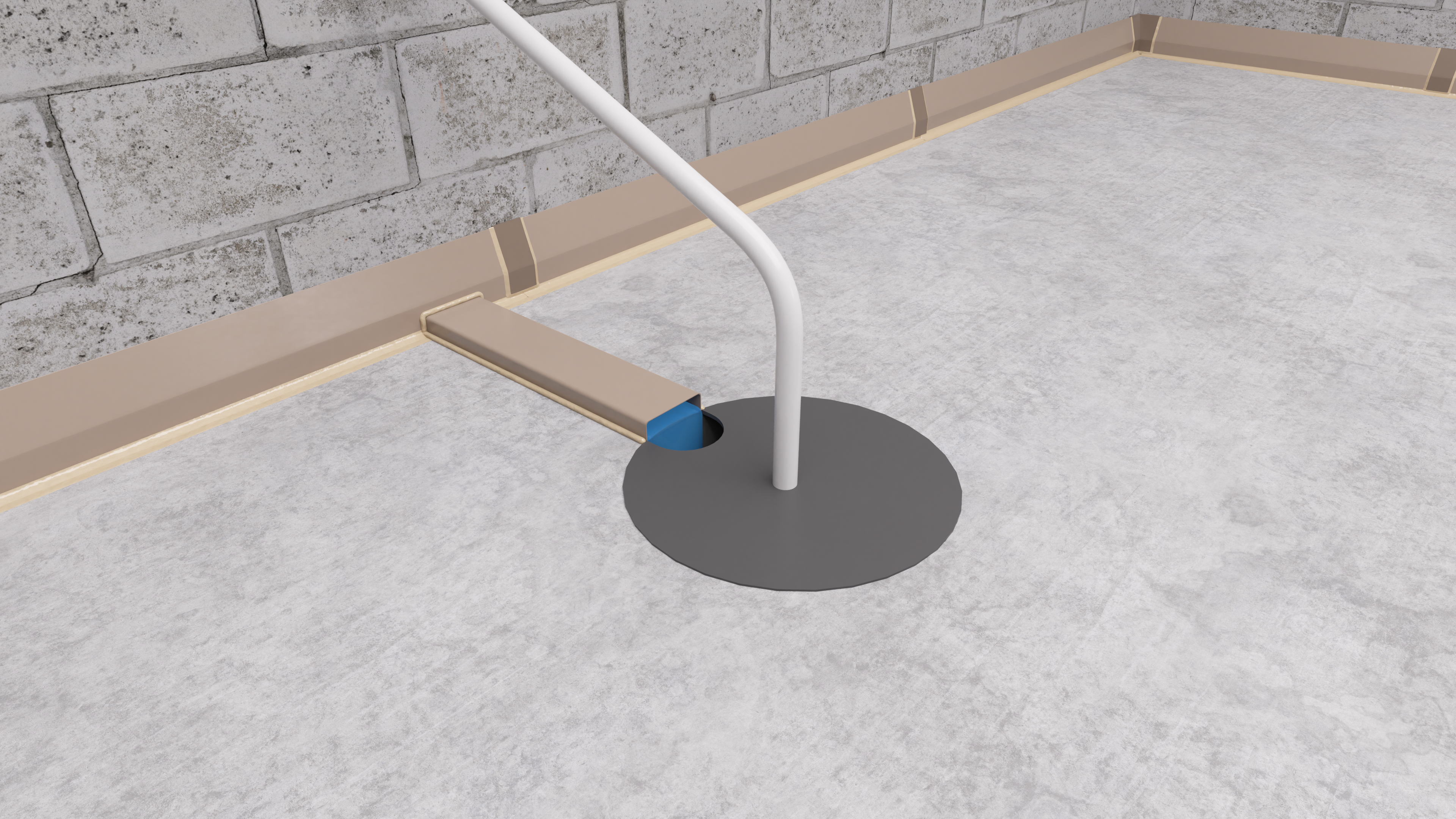Ready to fix your wet basement now?
Why your basemet leaks
Basement leaks typically occur due to a combination of factors such as poor drainage around the foundation, cracks in the walls or floor, inadequate waterproofing, and high groundwater levels. Hydrostatic pressure is a common culprit behind basement water leaks. This pressure builds up when the soil around the foundation becomes saturated with water, especially during heavy rainfall or snowmelt. As the soil becomes waterlogged, it exerts force against the basement walls, seeking areas of lower pressure, such as the joint between your concrete floor and walls. Hydrostatic pressure can force water through even the smallest openings, leading to leaks and seepage into the basement.

How to solve your wet, leaky basement:
You’ve learned why your basement leaks. Most basements leak water through the joint where the floor and walls meet because it is the weakest spot in a basement, which allows water to seep in. Now, it’s time to address the source of your wet basement to solve your wet basement problems for good. Follow the steps below from prevention to water management.

Step 1: Identify the source of seepage.
It’s important to identify if your water seepage is from groundwater or from condensation. One way to distinguish between the two is by examining the location and pattern of moisture. Groundwater-related moisture issues often result in consistent dampness or pooling along basement walls or floors, particularly during or after periods of heavy rainfall or snowmelt. Look for signs such as water seepage through cracks or gaps in the walls, or moisture appearing predominantly at the basement floor-wall junction, also known as the cold joint in a basement.
Conversely, condensation typically occurs on surfaces exposed to high humidity levels, such as basement windows, pipes, or cold water pipes. If moisture appears primarily on these surfaces and is accompanied by beads of water or dampness without any obvious signs of seepage from the walls or floor, it’s likely due to condensation. Monitoring humidity levels using a hygrometer and addressing ventilation and insulation issues can help mitigate condensation-related moisture problems.
However, if you’re basement seepage is the result of groundwater continue to step 2 for helpful tips on how to prevent groundwater seepage.
Step 2: Address poor exterior drainage issues to prevent seepage.
The first step when fixing a wet basement is to improve the exterior drainage around the foundation. Go outside and walk around your home’s foundation to address these key areas:
- Install a proper gutter system to manage roofwater runoff from pooling next to the foundation.
- Ensure the downspouts extend at least 8 feet away from the foundation.
- Fill in any low spots next to the foundation and grade soil to slope away from the home.
- Look for any sagging in concrete or asphalt around the foundation that’s allowing water to pool and address it to slope water away from home.
- Clean out clogged gutters spilling water next to the foundation.
- Clean out window wells and dig down window wells about 12 inches below the window, then add a layer of stone to help with drainage. Consider adding a window well cover.
With these exterior drainage issues addressed, it’s time to go back into the basement to install a waterproofing system to properly manage any future water seepage.


Step 3: Install a waterproofing system to properly manage seepage.
For minor groundwater seepage problems, simply addressing the exterior drainage issues could solve your water issue. If you’re continuing to get seepage in your basement, it’s time to go down into the basement to address the water by installing a basement waterproofing system. A waterproofing system is designed to properly manage the seeping water and drain it out of the basement.
Most wet basements leak water through the joint where the floor and walls meet. Installing an above-floor waterproofing channel like our SealOnce Basement System is ideal for do-it-yourself homeowners. There’s no busting of concrete, digging or trenching required with our SealOnce Basement System. The hollow baseboard style channel is bonded water-tight to the concrete floor with our exclusive waterproofing adhesive that works in dry or damp conditions. Once installed, the SealOnce Basement System quietly collects the seeping water and drains it away into a sump pump system or floor drain.

Avoid the most common mistake do-it-yourself homeowners make when trying to waterproof their own basement.
The #1 DIY basement waterproofing mistake is trying to stop or hold back seeping water in your basement with waterproofing paints or hydraulic cement. Waterproofing paints or super-flexy-bondy-patch-it products never work in the longterm to fix a wet basement. They often cause more damage by allowing hydrostatic pressure to build up to dangerous levels in your basement. High levels of hydrostatic pressure can result in foundation cracks, bowing and floor buckling.
Hydrostatic pressure is what builds up around your foundation and pushes water seepage into your basement. Water soaks down into the ground just outside the walls and starts building up its muscle 1 inch at a time, until it’s built up 2 or 3 feet high on your walls. Height is what gives water its strength, better known in the industry as hydrostatic pressure. The water is strongest at its lowest point, which is down around your basement’s floor. Hydrostatic pressure is what forces water into your basement through the seam where your floor and walls meet.
In contrast, a professional waterproofer always taps into and relieves the hydrostatic pressure when installing a basement waterproofing system to collect and channel water out of the basement. Basement waterproofing might be better termed as basement water management. The goal in retro-waterproofing is to properly manage the groundwater seepage and remove it from the basement.
While there are waterproofing options available for “preventing” water from entering through the basement walls, these are best used at time of construction and not after the home has been constructed. Excavating around the foundation to apply a waterproofing membrane is extremely invasive, costly and might not actually solve the issue. The only option then is to go inside the basement and install a waterproofing system to truly fix the wet basement permanently.

